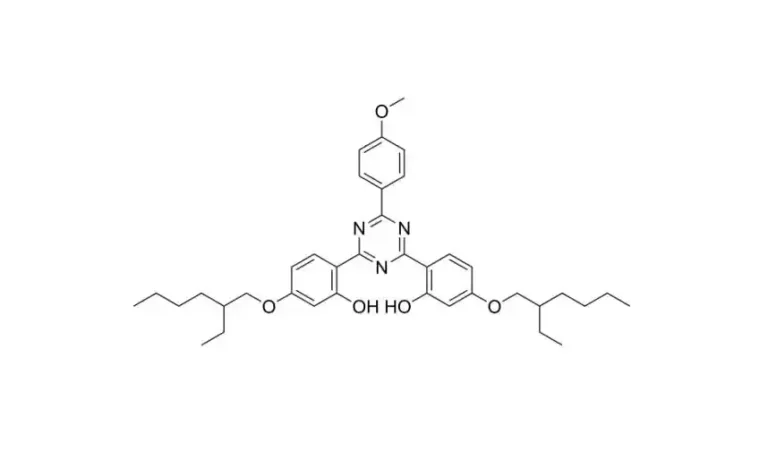
In deciding the sunscreen to apply for the benefit of protection against the sun, it is most important to thoroughly understand how different Bisoctrizole is from Zinc Oxide. Even though both serve as protective shields, but specifically against UV. They vary in terms of content, role, and performance. This article is going to describe their attributes deeply so that you can take the right choice when it comes to sun protection.
What Are the Key Differences Between Bisoctrizole and Zinc Oxide?
| Feature | Bisoctrizole | Zinc Oxide |
| Chemical Composition | Organic compound | Inorganic mineral |
| Mechanism of Action | Absorbs UV radiation | Reflects and scatters UV rays |
| Photostability | High | Moderate |
| Longevity of Protection | Long-lasting | Requires frequent reapplication |
| Safety Profile | Low irritation potential | Generally safe, but can cause dryness |
| Potential Irritations | Rare | Possible for sensitive skin |
Chemical Composition and Mechanism of Action
To properly assess their performance in sunscreens is to know the chemical composition and how each works individually. Bisoctrizole functions as an ingredient that absorbs UV rays and transmutes them into less dangerous energy. Zinc oxide, however, functions as a mineral by reflecting and scattering UV rays off the skin. These key differences in function have a profound impact on how effective they are in products.
Photostability and Longevity of Protection
Photostability is the way an ingredient will remain effective after exposure to sunlight. Bisoctrizole demonstrates photostability through the preservation of its protective attributes for extended periods. Zinc oxide, however, possesses moderate photostability. This could imply regular reapplication to provide extended protection.
Safety Profiles and Potential Irritations
It’s crucial to prioritize safety when choosing sunscreen components since Bisoctrizole is recognized for its irritation effects and is suitable for various skin types with its mild nature. While Zinc oxide is typically safe to use on the skin it may sometimes lead to dryness or irritation for those with sensitive skin.
How Effective Are Bisoctrizole and Zinc Oxide in Broad-Spectrum UV Protection?
UVA and UVB Absorption Capabilities
The reason Bisoctrizole is so effective at blocking both UVA and UV rays is because of its dual action formula while Zinc oxide provides complete protection against both UVA and UVB rays by physically blocking them from entering the skin.
Performance Under Various Environmental Conditions
The efficiency of components can be affected by environmental elements like humidity levels and temperature changes as well as exposure to water conditions. Bisoctrizole remains effective in environments thanks to its stable composition. However, zinc oxide may need some tweaking in its formulation to work effectively under certain conditions.
Comparative Analysis of SPF Ratings
SPFs are super important for knowing how well a sunscreen shields you from UV rays, UVBs! Bisoctrizole is great at boosting SPF levels because it’s good at soaking up those rays while zinc oxide is a choice for SPF but might need to team up with other filters or use higher amounts to reach the same protection levels.
Why Is Bisoctrizole Gaining Popularity in 2025?
The increasing fame of bisoctrizole can be credited to aspects that resonate with consumer choices and advancements in the industry.
Advances in Formulation Technologies
Advancements, in the field of formulation technologies have improved the durability and effectiveness of sunscreens containing bisoctrizole resulting in textures that cater to contemporary consumers looking for a smoother application process.
Consumer Preferences and Market Trends
Consumers are placing importance on comprehensive protection that also feels good on the skin nowadays and bisoctrizole manages to provide top-notch protection while still maintaining a pleasant texture and finish.
Regulatory Approvals and Industry Standards
Regulatory agencies around the globe have acknowledged the safety attributes of bisoctrizole through approvals establishing it as a favored option for formulators in search of trustworthy sun protection solutions due to its adherence to strict industry regulations.
What Role Does Zinc Oxide Play in Modern Sunscreens?
Even though new options such as bisoctrizole are becoming more popular in sunscreens nowadays zinc oxide continues to be an element in modern sunscreens because of its important role in history and continuous advancements in formulation.
Historical Context and Traditional Uses
For ages, people have relied on zinc oxide as a sunblock because of its natural source and its ability to form a strong physical barrier against damaging UV rays.
Innovations in Zinc Oxide Formulations
Progress in technology has resulted in the development of powdered zinc oxide that improves transparency without compromising effectiveness addressing past worries about noticeable residue after application a significant factor in maintaining consumer approval today.
How to Choose Between Bisoctrizole and Zinc Oxide for Optimal UV Protection?
Choosing between these two ingredients relies on a range of factors specific to personal requirements, preferences, and environmental concerns, among other considerations.
Factors Influencing Consumer Choice
Knowing the factors influencing consumer decisions can guide us in making choices when picking between products with ingredients, like bisotrizole or the more familiar zinc oxide based on individual needs and preferences.
Skin Type Considerations
Those who are more sensitive may prefer products that contain bisotrizole due to its irritation potential compared to zinc oxides. This is especially true for those who experience issues after applying such products.
Application Preferences
For individuals who like lighter products bisotrizole and similar advanced technologies provide enhanced experiences compared to denser creams often linked with traditional zinc oxide products. This makes them great choices for people in climates, or during the summer months when user comfort is a top priority worldwide!
Environmental Impact
Conscious shoppers might focus on the sustainable sourcing methods used in the manufacturing processes of products, like bisotrizole and zinc oxide. This helps to minimize the impact left after consumers use these products promoting responsible stewardship principles throughout the entire lifecycle stages mentioned above.
Conclusion: Choosing Between Bisoctrizole and Zinc Oxide for UV Protection
In the end, choosing between bisotrizole and traditional options like zinc oxide requires consideration based on various factors such as personal preferences, skin type, lifestyle, and environmental impact.
Who Is BFP, and What Is Their Contribution to Bisoctrizole Supply?
The supply chain is crucial in making sure that notch raw materials are always available for producing sunscreens with essential active ingredients in different markets worldwide today.
Introduction to BFP as a Reliable Supplier
Among the suppliers in the industry is BFP. They focus on distributing high-quality bisotrizole to a range of customers across various global regions. This success is attributed to their infrastructure and years of experience in a competitive industry landscape. Their expertise adapts well to present-day market conditions.
Overview of BFP’s Industry Reputation
An esteemed reputation established through a dedication to providing outstanding service levels supported by a strong commitment to quality assurance procedures guarantees that each batch meets or surpasses strict regulatory standards that apply globally across various relevant scenarios in today’s contextually appropriate settings.
Product Details: BFP-SP M (Bisoctrizole)
One of their products is a unique proprietary blend called “BFP-SP M ” specifically formulated with carefully balanced concentrations to enhance effectiveness and reduce the likelihood of negative side effects often linked to other similar products available in the market today especially in relevant environments when looking at the big picture.
FAQs About Bisoctrizole and Zinc Oxide
Answering questions can clear up misunderstandings about how to use and apply the active agents we talked about earlier in those specific contexts.
What Makes Bisoctrizole Different from Other UV Filters?
Bisotrizole stands out from filters by not just absorbing but also reflecting offering broad coverage across various wavelengths in everyday scenarios.
Can Zinc Oxide Be Combined with Other Ingredients for Enhanced Protection?
Combining zinc oxides with supporting agents improves protection prolonging effectiveness through natural synergies among the components mentioned earlier in their respective contexts.
Are There Any Known Allergies Associated with Either Ingredient?
In some cases, these substances are deemed safe for the majority of people worldwide. However, there have been isolated cases of allergic reactions in the past involving one or both of these agents. It is advisable to take steps when needed to avoid any unexpected adverse effects during everyday use in relevant contexts.












